User Manual for Imagineer Systems Mocha Pro 5 Upgrade for Adobe, Avid, and OFX Sapphire 10 for Autodesk Click to enlarge the picture
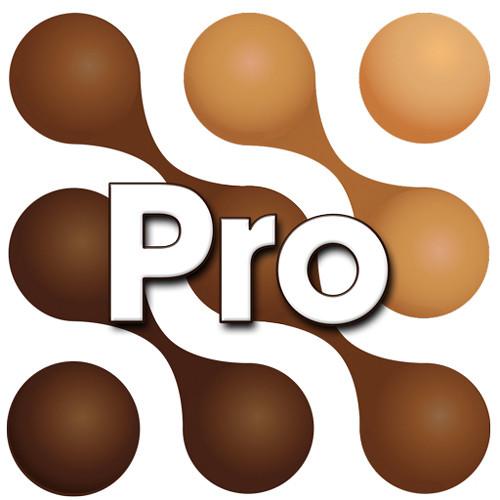 Contents of the user manual for the Imagineer Systems Mocha Pro 5 Upgrade
Contents of the user manual for the Imagineer Systems Mocha Pro 5 Upgrade
- Product category: Video Editing Plug-Ins Imagineer Systems
- Brand: Imagineer Systems
- Description and content of package
- Technical information and basic settings
- Frequently asked questions – FAQ
- Troubleshooting (does not switch on, does not respond, error message, what do I do if...)
- Authorized service for Imagineer Systems Video Editing Plug-Ins
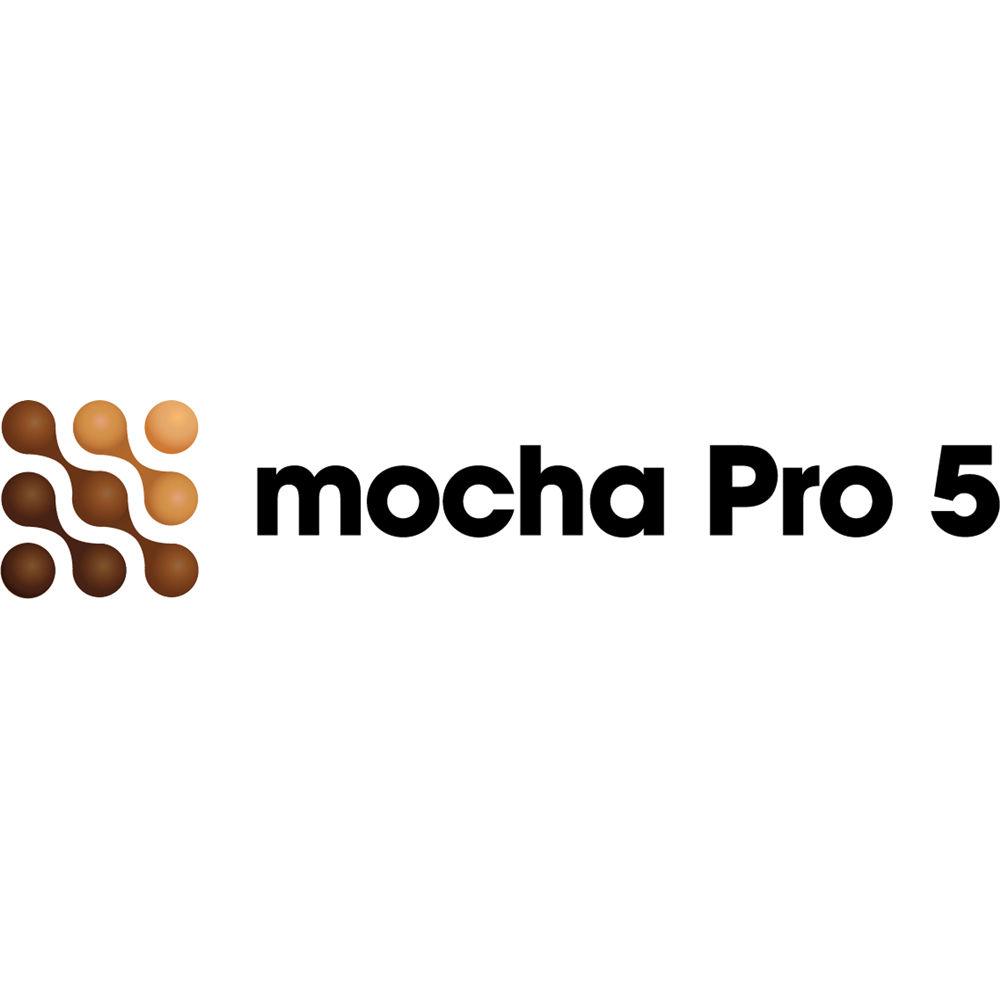
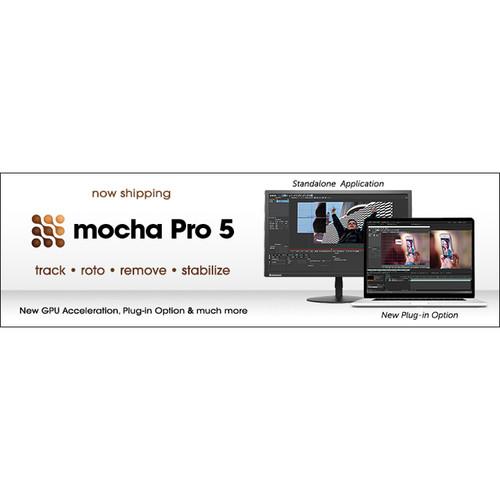
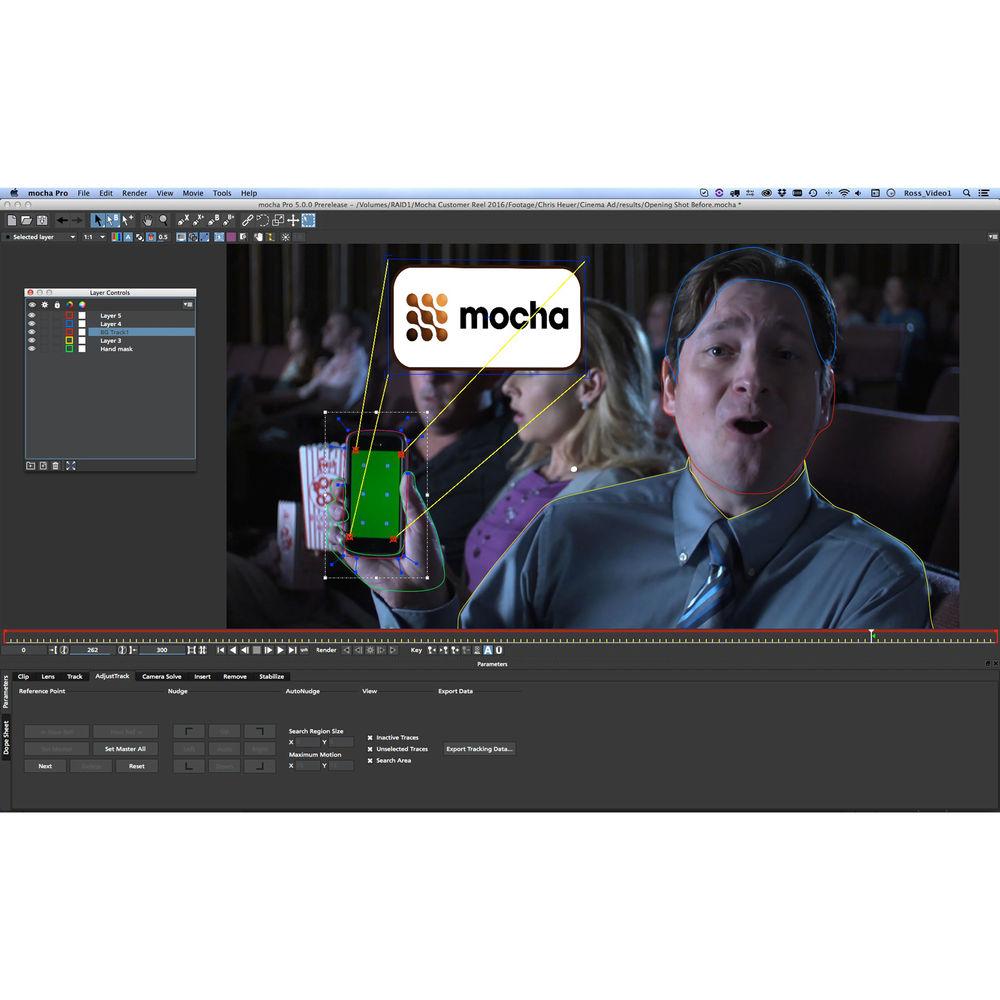
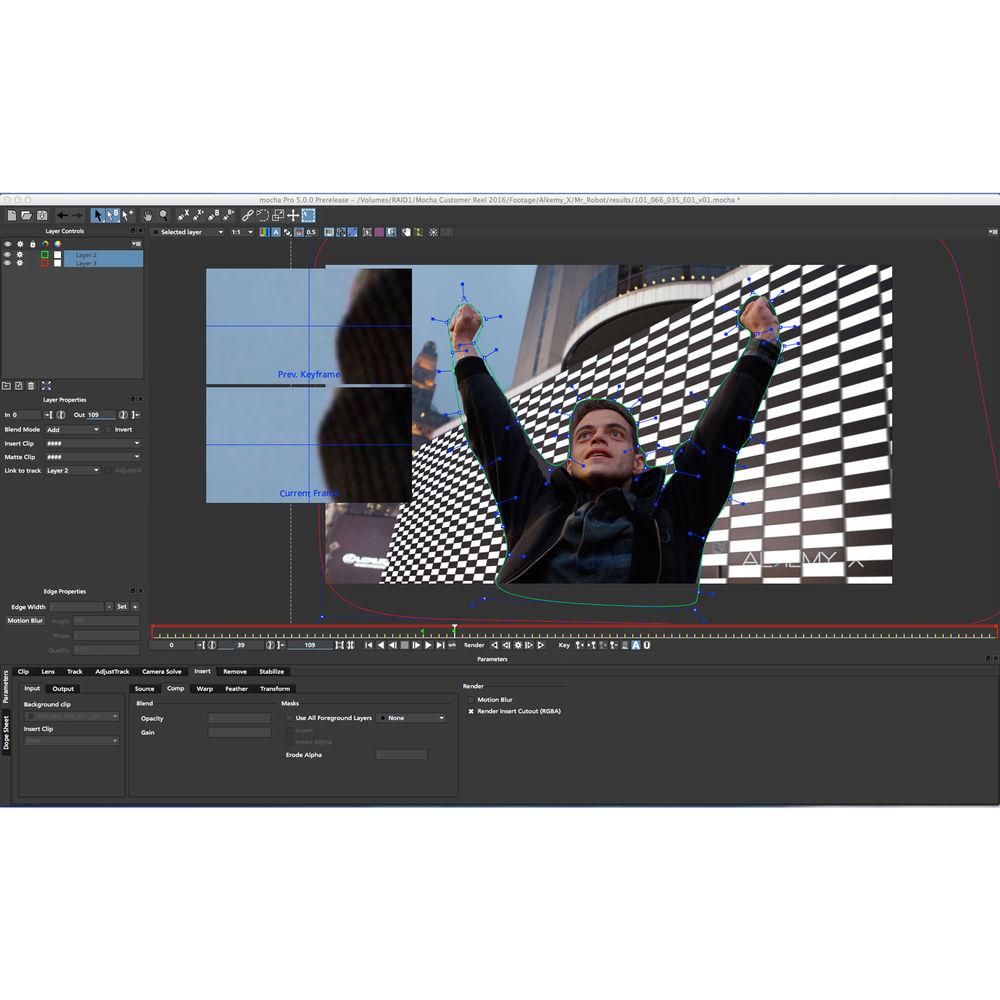
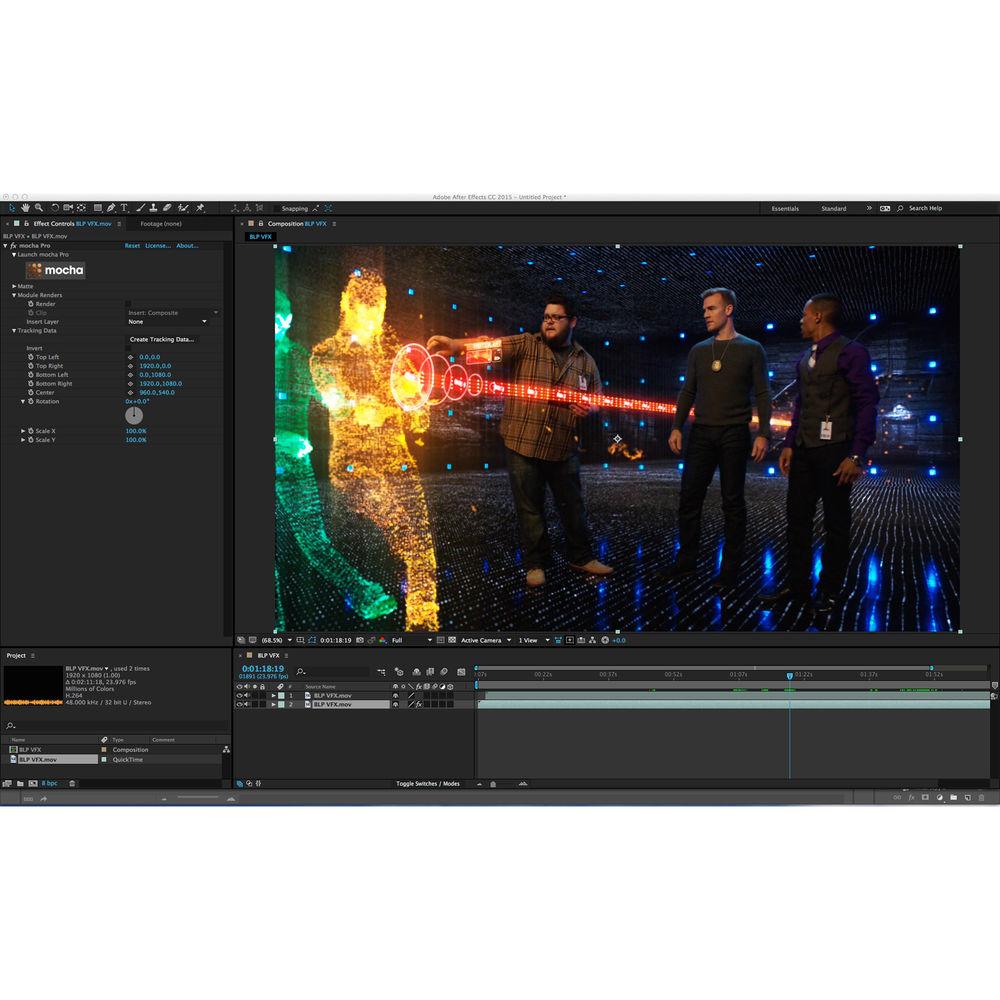
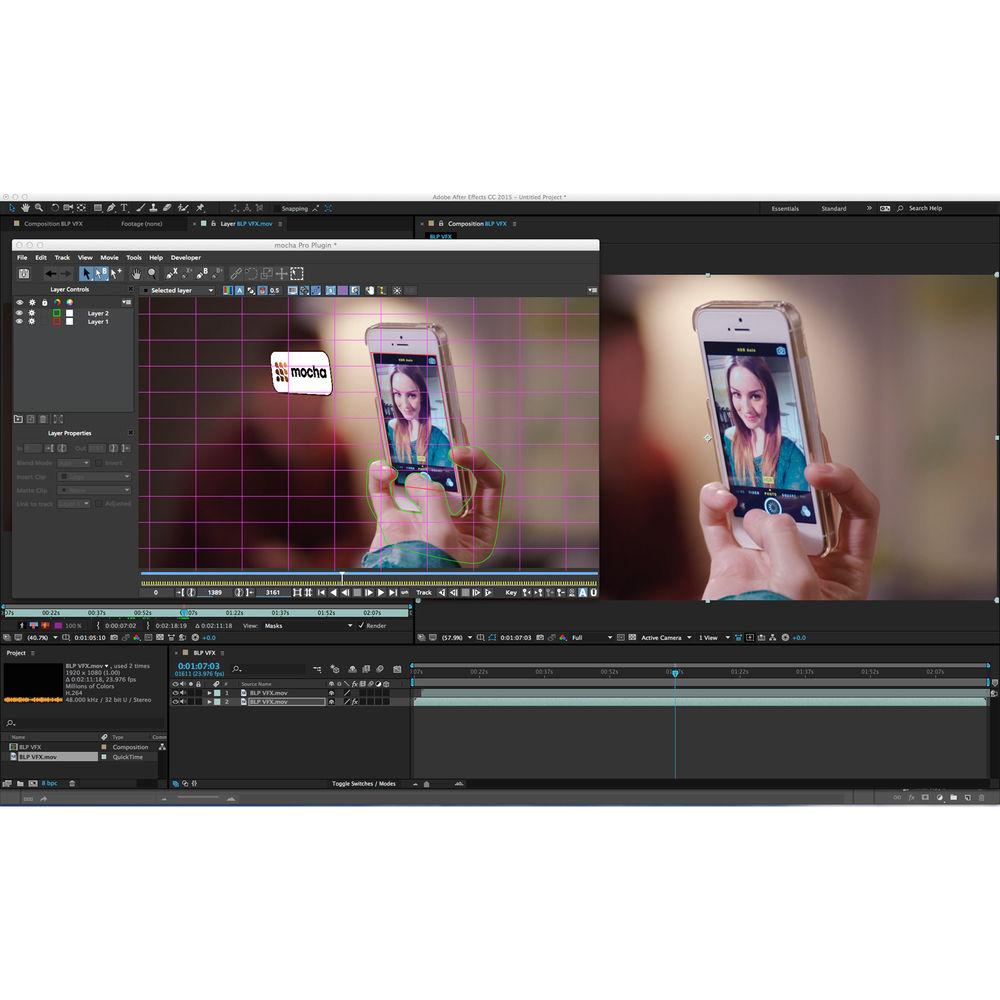
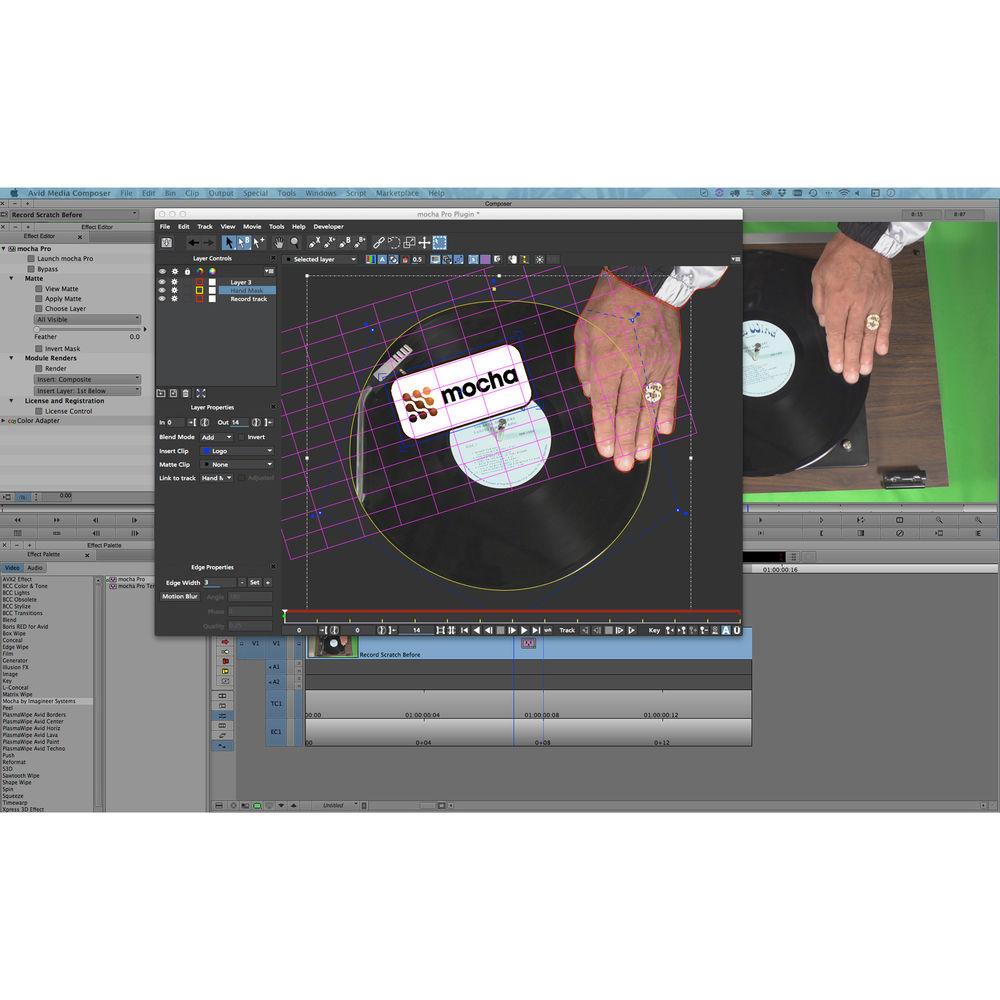
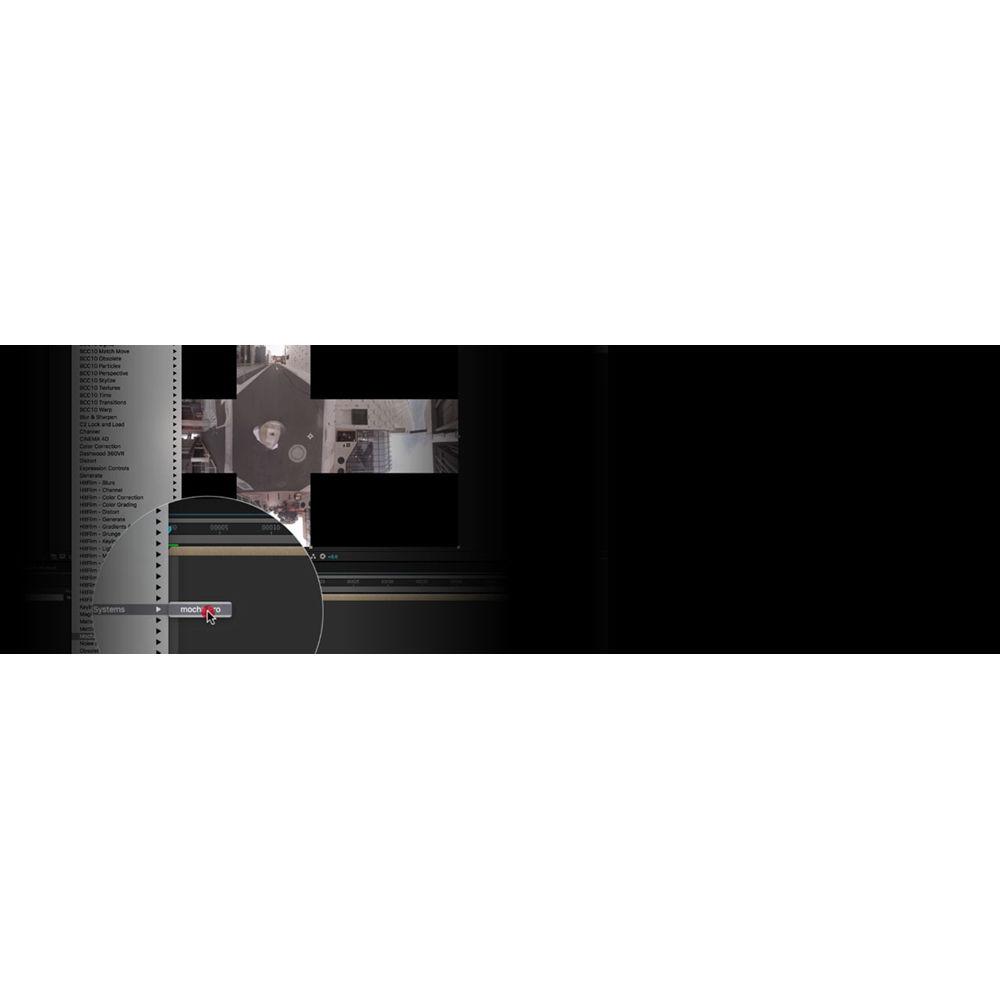
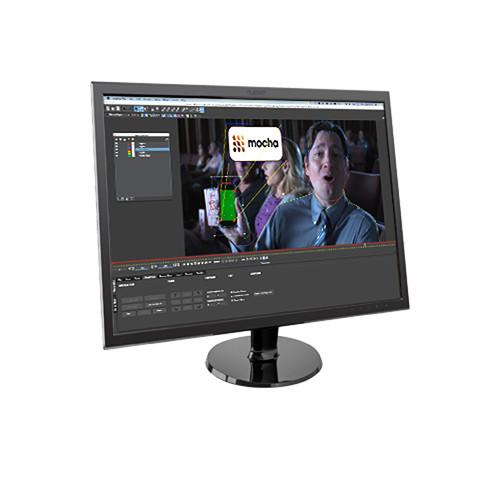 |
User manual for the Imagineer Systems Mocha Pro 5 Upgrade contain basic instructions
that need to be followed during installation and operation.
Before starting your appliance, the user manual should be read through carefully.
Follow all the safety instructions and warnings, and be guided by the given recommendations.
User manual is an integral part of any Imagineer Systems product,
and if it is sold or transferred, they should be handed over jointly with the product.
Following the instructions for use is an essential prerequisite for protecting
health and property during use, as well as recognition of liability on the part of the manufacturer
for possible defects should you make a warranty claim. Download an official Imagineer Systems user manual in which you will find instructions on how to install, use, maintain and service your product.
And do not forget – unsuitable use of a Imagineer Systems product will considerably shorten its lifespan!
|
Product description The Mocha Pro 5 Upgrade + Sapphire 10 Bundle from Boris FX is being offered to existing owners of a matching Mocha Pro 4. The bundle includes an upgrade to Mocha Pro 5 and the new Sapphire 10 VFX application. Enjoy newer features in Mocha Pro, and add hundreds of VFX filters and thousands of presets to your toolset. Use both plug-ins on all hosts at the same time as long as they are on the same computer. - Mocha Pro 5 Standalone + Multi Host Plug-In (Upgrade from v4, Download) Mocha Pro 5 is the flagship planar tracking and roto application from Imagineer Systems. Mocha Pro 5 features advanced modules for Object Removal, 3D Camera, Stabilization, and Lens Correction.
Pairing the Standalone and Multi-Host Plug-In versions of Mocha Pro 5 under a single serial number, this bundle offers the flexibility to use the software totally individually and at the same time right from within Adobe, Avid, and select OFX applications.
The compatible hosts of the plug-in version are Adobe Premiere Pro and After Effects CC 2014-2018, Avid Media Composer 8+, Foundry NUKE, Blackmagic Fusion, Vegas Pro, and HitFilm. The plug-in uses the host's media engine and project format, reducing the need for transcoding or external file management. It can be used in all hosts at the same time, as long as on the same computer. Mocha Pro 5 is compatible with Mac, Windows, and Linux systems.
The standalone version can render finished shots as well as export data to select post-production software. The plug-in has all the same features of the standalone version except for Silhouette FX import/export, Python Scripting, and Stereoscopic 3D. The plug-in can be used in a stereoscopic workflow in the host, but doesn't offer any of the stereoscopic tools available in the standalone version.
The award-winning planar tracker is now updated with GPU acceleration in Mocha Pro 5, and the resulting speed increases provide for much more superior workflows with high resolution footage.
Mocha Pro has been used on thousands of feature films and television shows, including Star Wars: The Force Awakens, Mad Max: Fury Road, and Game of Thrones. Note: This is an upgrade from the standalone, node-locked version of mocha Pro 4 to both the standalone and multi-host plug-in versions of mocha Pro 5, also node-locked. - New Features
- GPU Acceleration
Mocha Pro 5 features the capability to run planar tracking on GPU. Tests have resulted in 40-60% speed increases, depending on the project settings. To enable GPU tracking, you will need an OpenCL capable video card.
Python Scripting (Available in Standalone Version)
Mocha Pro 5 includes a Python scripting module with in-application interface. Python lets artists and technical directors control the user interface, modify and edit functions, and integrate with external applications and asset management systems. Python is a widely used scripting language that is completely integrated into Mocha Pro 5.
Silhouette Import & Export (Available in Standalone Version)
Mocha Pro 5 has the ability to import and export roto shapes to and from Silhouette FX.
Fusion Shape Export
Mocha Pro 5 exports tracked roto shapes to Blackmagic Design Fusion.
HitFilm Track Export
Mocha Pro 5 is also capable of exporting planar motion tracking data to HitFilm 4 Pro as a corner pin import. - Planar Tracking
- The renowned Mocha planar tracking has now been updated for speed and efficiency with GPU tracking and plug-in options. Planar tracking is at the heart of all Mocha Pro modules and is used to drive 2D and 3D tracking, roto-masking, object removal, and more. Unlimited tracking layers and advanced AdjustTrack interface can handle reflections, occlusions, noise, even areas with motion blur or low details.
- Advanced Roto Tools
- X-spline and Bezier tools are designed to quickly create and edit detailed roto shapes. When linked to Mocha's planar tracking, roto shapes inherit motion and perspective, dramatically reducing manual keyframe work. Advanced tools for shape editing include per-point edge feathering, join layers tool, transform tool, group layers, and more.
- Object Removal
- Mocha Pro 5's Remove Module is an advanced alternative to traditional clone and paint techniques for getting rid of unwanted pixels and removing objects. It automatically detects and blends pixels from other frames with little user input, offering massive time savings. Mocha Pro's clean plate functionality imports and corrects fixed frames for digital beauty work and matte painting.
- Insert Module
- Mocha Pro 5's Insert Module allows you to render an image onto your tracked surface within Mocha Pro or back to your host timeline with the available plug-in options. Composite with realistic motion blur or render out the tracked insert. A powerful mesh warp distortion tool allows the user to wrap and bend inserts onto non-flat surfaces. The Insert Module combines with the Lens Module for realistic VFX compositing on distorted footage.
- Lens Module
- This simple and easy-to-use interface allows users to calibrate the distortion introduced by camera lenses. Unwanted lens distortion can be removed or matched for realistic compositing. Export lens data or render correction using available plug-in options.
- 3D Camera Solver
- Solve 3D match moving capabilities with planar ease. Unlike feature based tracking, Mocha solves the 3D camera based on user-selected planes. This fast and easy-to-use solution is ideal for set extensions, 3D text, and particle tracking. Additionally, the 3D Solver can be used to assist other 3D tracking applications on difficult shots with low detail or significant foreground occlusions.
- Stabilize Module
- The stabilize module can lock down camera motion or stabilize moving objects for visual effects and finishing work. A smooth option with selectable anchor frames helps reduce high frequency jitters while maintaining original camera motion. Center, scale, or crop stabilized footage based on user driven planar tracking.
- Stereoscopic 3D (Available in Standalone Version)
- Mocha Pro 5 supports native stereo 3D. This workflow uses planar tracking analysis on "both eye views" to reduce manual offsets and tedious keyframe work on stereo 3D rotoscoping, tracking, 3D camera solve, and object removal.
- All Features
- - Resolution and frame rate independent visual effects software
- GPU accelerated planar motion tracking
- Roto and masking tool set
- X-spline and Bezier roto tools with per-point edge feathering
- Roto: Transform Tool, Join Layers, Project Merge
- Layer Manager: Color Spline, Color Fill, Group Layers, Multi-Select, Project Merge
- Export roto and track data to industry standard formats
- 3D Camera Solve Module: export to AE and FBX
- Dopesheet keyframe editor
- OGL accelerated matte rendering with motion blur
- Customizable keyboard shortcuts
- Removal Module: Auto-object removals with optional clean plate inserts
- Lens Module: Lens distortion analysis with distort and undistort render function
- Render distortion maps (Rasterized ST Maps)
- Import and use external distortion maps in all Mocha Pro modules
- Insert Module: 2D match move compositing with motion blur render
- Offset & 3D Offset surface composting and track export
- Mesh Warper distortion tool
- Color Fill Shape Rendering (Export to Nuke Rotopaint and Mocha shape for After Effects)
- Python Scripting module (available in Standalone version) - Export Track Data to Popular Hosts
- - Autodesk: Flame, Smoke, Flare
- Adobe After Effects CS3 - CC 2015
- Apple Final Cut Pro 7
- Apple Motion 4, 5
- Apple Shake
- Avid|DS
- Assimilate SCRATCH v7
- Quantel generationQ
- Eyeon Fusion
- Nuke, Nuke X
- Boris FX: BCC Track Format: (supports Premiere, AE, Media Composer, Symphony, and Vegas) - Export Roto Data to Popular Hosts
- - Apple Final Cut Pro 7 (with Mocha shape for Final Cut plug-in)
- Autodesk Flame, Smoke, Combustion: GMasks - now updated for batch export
- Nuke, Nuke X
- Adobe After Effects CS3 - CC 2015
- Silhouette FX (import/export) (available in Standalone version)
- Adobe Premiere Pro (paste to mask)
- Blackmagic Fusion
- Shake - Export 3D Camera to Popular Hosts
- - Adobe After Effects CS4 - CC 2015
- FBX for Nuke
- FBX for Autodesk Maya, Flame, Smoke - Maxon Cinema 4D
- HitFilm 2 Ultimate
- Export to MochaBlend for C4D - Export Lens Data to Popular Hosts
- - Adobe After Effects CS4 - CC 2015 (with Mocha Lens plug-in)
- Nuke, Flame, Fusion (with rendered ST Maps) - Sapphire 10 for Autodesk (Perpetual with 1-Year Upgrades & Support, Download) Boris FX Sapphire 10 is a plug-in collection of 260+ professional effects, transitions, and looks for film, animation, and commercial work artists. The whole package is resolution-independent and can be used on any footage, including 8K and above. Everything can also be rendered out at all bit depths (8-bit, 32-bit, floating point, etc.). Sapphire uses full floating-point processing for improved image quality and full 32-bit HDR support. Sapphire is well-known for high-quality lighting and distortion among other features.
Sapphire 10 for Autodesk doesn't include the popular Builder 2.0 tool, which lets you create your own effects, but nevertheless over 3000 presets do come pre-built. Furthermore, complex photorealistic lens flares can be made from scratch within the Flare Editor.
Sapphire offers extensive parameter sets so that you can control every aspect of an effect. It also features on-screen widgets that you can use instead of entering numerical values.
Sapphire is engineered for fast CPU speeds and supports multi-processor systems. It installs on your hard drive and can be used in all hosts at the same time as long as on the same computer. This perpetual version comes with a 1-Year Upgrades & Support plan, which includes free upgrades and unlimited access to phone and email support during business hours. New Features - New Presets and Improved Browser
- The improved preset browser features easier access to advanced presets and a significant increase in overall load time. Users now have the option to quickly preview any of the over 150 newly added presets within the "new" category with a single click.
- Luna
- Depict accurate lunar cycles down to date and time with this high-resolution, photorealistic moon generator. Using a complex bump map to achieve stunning realism, Luna features a wide array of options such as halo, glow, color tint, and atmosphere.
- RomanTile
- Form a quilted patchwork of tiles with a textured geometric mosaic overlay. Add in grout, play with different textures, and use custom embossing to achieve a variety of different looks.
- Brush
- Apply realistic paint brush strokes to any image or graphic. Use different mediums like oil or chalk, and many different brush surfaces such as felt tip, sponge, or pencil.
Other Effects - Bandpass
- Two blurs with different widths result in different scales and offset by a gray value. Can result in more abstract looks or color grading looks.
- Beauty
- Applies smoothing, color correction, soft focus, and glow to skin regions. While intended for human faces, Beauty can be used to smooth out other shots.
- BleachBypass1
- Simulates a film process in which silver is not removed from the negative. The result has increased contrast and reduced color saturation for a color grading or color treatment look.
- BleachBypass2
- Simulates a film process where bleaching is skipped or reduced. Like blending a B&W image over a color image, the result is increased contrast and reduced color saturation.
- Blur
- Blurs the source clip by an arbitrary amount using a Gaussian, triangle, or box filter.
- BlurChannels
- Blurs each channel of the source clip using a Gaussian, triangle, or box filter.
- BlurChroma
- Separates the source into luminance and chrominance components, blurs the chrominance and/or the luminance independently, and recombines them.
- BlurDirectional
- Blurs the source clip in a given direction using a Gaussian, triangle, or box filter. Each channel can be blurred by different amounts.
- BlurMoCurves
- Performs a motion blur and optionally transforms the source clip using the animated curves of the Z Dist, Rotate, and Shift parameters.
- BlurMotion
- A transition that performs a motion blur between two clips. This can be used for radial zoom blurs, rotational blurs, directional blurs, or any combination of these.
- Cartoon
- Gives a cartoon look to an image by drawing new outlines on edges. Smooths the colors of the areas between the edges, and optionally posterizes colors into fewer color values.
- CartoonPaint
- Adds additional paint parameters onto a converted cartoon image to make the footage look like a living painting.
- ChannelSwitcher
- Reorders the RGBA channels of the source clip to change and emphasize colors.
- ClampChroma
- Controls the maximum levels of chrominance and luminance of the clip, adjusting levels to 'broadcast safe' values.
- CrossHatch
- Simulates a pen-sketch look using overlapping strokes. The source is divided into four bands based on luma; each band from dark to light gets a different pattern of strokes.
- Deband
- Smooths out a clip by removing banding artifacts and diffusing pixels across the banded areas while keeping the original edges intact.
- DefocusPrism
- Defocuses the color channels of the source clip to produce a blurred effect.
- Diffuse
- Scrambles the pixels of the source input within an area determined by the Diffuse Amount.
- DigitalDamage
- Simulates digital playback errors, compression artifacts, and digital noise. Comes with seven different types of damage, each with custom parameters.
- DissolveBlur
- Transitions between two clips while blurring each. The first clip is blurred and faded out while the second clip is unblurred and faded in.
- DissolveBubble
- Transitions between two clips using a bubble warping function. The first clip is warped away and faded out while the second clip is unwarped into place and faded in.
- DissolveDefocus
- The transition version of RackDefocus. Dissolve in between clips by simulating a real defocused camera lens.
- DissolveDiffuse
- Transitions between two clips by scrambling the pixels of the inputs within an area of the max amount. The first clip is diffused away, and the second clip is diffused into place.
- DissolveDistort
- Transitions between two clips while distorting each using the gradient of the other. The first clip is warped away and faded out while the second clip is unwarped and faded in.
- DissolveEdgeRays
- Transitions between two clips using animated edge rays. The clips dissolve into each other, and edge rays are added to the result.
- DissolveFilm
- Transitions between two clips using a film dissolve with selectable gamma. Film dissolve preserves the highlights in the clips longer compared to a regular dissolve.
- DissolveFlashbulbs
- Simulates lots of flashbulbs going off while dissolving between two clips. With many small flashes, can look like a stadium scene.
- DissolveGlare
- Transitions between two clips using animated glares. The clips dissolve into each other, and glares are added to the result.
- DissolveGlint
- Transitions between two clips using a bright glowing glint. The clips dissolve into each other, while each one gets a glint which ramps up and down during the effect.
- DissolveGlintRainbow
- Transitions between two clips using a bright glowing glint. The clips dissolve into each other while each one gets a glint which ramps up and down over the duration of the effect.
- DissolveGlow
- The transition version of Glow, using natural glowing light to enhance the dissolve between two clips. The glow can be customized for the incoming and outgoing clip.
- DissolveLensFlare
- The transition version of LensFlare, using simulated lens flares to enhance the dissolve between two clips.
- DissolveLuma
- Transitions between two clips using a pattern derived from their luminance. One clip often appears to emerge through the other.
- DissolvePuddle
- Transitions between two clips while warping by a circular pattern of waves. The first clip is warped away and faded out while the second clip is unwarped into place and faded in.
- DissolveRays
- Transitions between two clips using animated rays. The rays ramp up and down over the duration of the effect. The rays animate by moving the origin across the screen along a line.
- DissolveShake
- Transitions between two clips by applying a shaking motion to them, along with a quick dissolve. The shaking uses translation, zooming, and/or rotation.
- DissolveSpeckle
- Transitions between two clips using a speckled noise pattern. The Dissolve Percent parameter should be animated to control the transition speed.
- DissolveStatic
- Transitions between two clips using random pixel static. The pixelated look of this effect depends on the image resolution, so test your final resolution before processing.
- DissolveTiles
- Transitions between two clips while breaking each up into tiles and scrambling them. The first clip breaks apart and spreads out while the second clip coalesces behind the first.
- DissolveVortex
- Transitions between two clips using a spiral/vortex warping function. The first clip is warped away and faded out while the second clip is unwarped into place and faded in.
- DissolveWaves
- Transitions between two clips using a waves warping function. The first clip is warped away and faded out while the second clip is unwarped into place and faded in.
- DissolveZap
- Transition between two clips using animated lightning bolts. The clips dissolve into each other, while the lightning grows.
- Distort
- Warps the source clip to generate optical glass-like effects as if the source clip were being viewed through an arbitrarily-shaped lens.
- DistortBlur
- Blurs the source clip in the direction of the gradient of the lens input clip. It is best demonstrated when the lens image contains just a few simple shapes.
- DogVision
- Generates a dual color channel version of an image, as might be perceived by the limited color vision of dogs. Effective in emphasizing complementary colors.
- DuoTone
- Recolors the source clip according to two specified colors using the brightness of the source clip. Similar to QuadTone and TriTone.
- EdgeAwareBlur
- Blurs fine textures of an image while preserving the larger details, without having to produce separate mattes. Useful for cleaning up shots of food, product labels, and fabrics.
- EdgeColorize
- Assigns different colors to the edges of the source clip depending on their direction. Increase the Edge Smooth parameter for thicker edges.
- EdgeDetect
- Finds and colors the edges within an image. Choose from RGB, Chroma, or Mono edges and tweak from there. Can be paired with other Sapphire effects for cartoon and paint styles.
- EdgeRays
- EdgeRays emits rays from the edges of the source layer. The source layer can also be selected as a matte to colorize the rays. Similar to Rays.
- EdgesInDirection
- Finds the edges of the source input that are aligned in a specified direction. Increase the Edge Smooth parameter for thicker edges.
- Emboss
- Embosses the source clip, emphasizing the edges, using the brightness of the Bumps input as a relief map.
- EmbossDistort
- Embosses and warps the source clip, emphasizing the edges, using the Bumps input as a relief map. Typically results in a liquid chrome look.
- EmbossGlass
- The source is embossed and warped using the Bumps input as a relief map and lens image. A chrominance distortion is also performed, separating the spectrum for a 'prismatic' look.
- EmbossShiny
- Embosses the source clip, emphasizing the edges, using the Bumps input as a relief map. A lighting model is used which includes highlights from specular reflections.
- Etching
- Generates a version of the source clip using two sets of black and white lines of varying thickness to give an 'etching' or 'lithograph' look.
- FeedbackBubble
- Previous frames are combined with the current frame while distorting by a bubble pattern. The feedback is reinitialized whenever any non-consecutive frame is processed.
- FilmDamage
- Simulates damaged film with elements including dust, hairs, stains, scratches, defocusing, flicker, and shake. Each element has controls for adjusting the look of the damage.
- FilmEffect
- Makes video look like it was shot on film, and is also used as a color treatment tool. Remove field artifacts, perform color correction, add film grain, and apply glow or a soft focus.
- FilmRoll
- Transitions between clips vertically, with optional damage components, resulting in a film strip effect.
- FlashBulbs
- Simulates lots of flashbulbs going off. With many small flashes, can look like a stadium scene. With a few large flashes, works well on a celebrity red carpet clip.
- FlutterCut
- Transitions rapidly between two clips for a high-energy effect. Insert solid-colored frames and inverted frames as well.
- FlysEyeCircles
- Creates a fractured, fly's eye view effect by breaking the image into circle-shaped tiles and transforming the image within each tile.
- FlysEyeHex
- Creates a fractured, fly's eye view effect by breaking the image into hexagon-shaped tiles and transforming the image within each tile.
- FlysEyeRect
- Breaks the image into rectangular shaped tiles and transforms the image within each shape, to create a fly's eye view effect.
- Gamma
- Applies a gamma correction to the input clip. The red, green, and blue channels can be adjusted independently.
- Glare
- Composites rainbow halos and/or glint-like rays at locations where the source clip is brighter than the threshold.
- Glint
- Generates star-shaped glints at locations where the source clip is brighter than the threshold.
- GlintRainbow
- Generates star-shaped rainbow-colored glints at locations where the source clip is brighter than the threshold.
- Glow
- Generates natural glowing light in the source clip. Adjust the direction, color, and other features of the glow.
- GlowAura
- Generates radial gradient aura lines following the gradient of the source clip. Adjust the Width, Frequency, Phase, and Twist parameters to make different aura patterns.
- GlowDarks
- This effect gives a warm, smoky look to your footage by softly darkening the darker areas of the source clip.
- GlowDist
- Generates glows based on the distances from the edges of the source input. This is best observed when used on images with dark backgrounds.
- GlowEdges
- Creates glowing light from the edges in the source clip.
- GlowNoise
- Generates glowing light from areas of the source clip that are brighter than the given threshold. Solid noise texture is included to give the glow a noisy or grainy effect.
- GlowOrthicon
- The source clip is darkened around parts of the source clip that are brighter than the given threshold, to give an 'orthicon' or 'dark glow' look.
- GlowRainbow
- Generates rainbow and other chroma glows based on distances from edges of source input.
- GlowRings
- Generates glows of colored rings around the areas of the source clip that are brighter than the given threshold. Raise the Threshold parameter to produce glows in fewer areas.
- GradientMulti
- Generates custom multi-color gradients using up to six control points. The gradient can be combined with the background clip.
- Grain
- Adds color and/or monochrome grain to the source clip. Adjust the grain texture with the amplitude and frequency parameters.
- GrainRemove
- Smooths the source clip while retaining the edges. Use the Show:Edges option to inspect which edges will be retained.
- GrainStatic
- Adds color and/or monochrome random noise of given amplitudes to every pixel of the source clip.
- Grid
- Makes a 2D grid of lines, with the option to combine it with the background clip. Create a variety of different grid styles and animate the grid for unexpected looks.
- Grunge
- Adds natural textural elements to dirty up a shot. Choose from categories including dirt, stains, flecks, grime, scratches, and paint. Grunge can be used as vignette and animated.
- HalfTone
- Creates a halftone effect using a pattern of black and white dots. Change the color and size of dots to create artistic looks like printing errors, newsprint, and comic print.
- HalfToneColor
- Creates a halftone effect on your source footage using a pattern of colored dots.
- HalfToneRings
- Generates a duotone version of the source clip using a repeating pattern of concentric rings. Use the Smooth Source parameter to remove details and make dots more consistently shaped.
- HotSpots
- Generates a hotspot image containing areas of the source clip brighter than a given threshold to produce a color grading effect.
- HuesAtBright
- Adjusts the hue, saturation, brightness, and/or offset of the source clip.
- Invert
- Inverts the colors of the source clip, so black becomes white, and white becomes black. This can also invert luma, chroma, RGB and alpha channels and do basic color correction.
- JPEGDamage
- Creates a version of the source input that is subjected to JPEG compression artifacts and errors. This can be used to give various looks of low-quality digital transmissions.
- Kaleido
- Reflects the source clip into a pattern of equilateral shapes such as triangles, squares, octagons, and diamonds.
- KaleidoPolar
- Warps the source clip around in a disk shape and reflects radially as if viewed through a reflecting cylinder.
- KaleidoRadial
- Simulates a traditional 2 or 3-mirror kaleidoscope. A pie slice piece of the source is visible through the angle between the mirrors, as well as mirror-reflected copies of it.
- LensFlare
- Renders a lens flare image over the background clip, incorporating various flare elements between the hotspot and pivot locations. Use the Flare Designer to create your own lens flare.
- LightLeak
- Less subtle than a lens flare, this organic lighting effect simulates light leaking into the frame to add nostalgic warmth or a vintage feel to clips.
- Median
- Applies a median filter to the source clip. An alternative to a Gaussian blur, median filters are useful for cleaning up noise while preserving the image edges.
- MonoChrome
- Generates a monochrome version of the source using adjustable weights for red, green, and blue channels. It can simulate a color filter applied to the lens of a black and white camera.
- Mosaic
- Generates a pixelated version of the source clip. Increase the Smooth Colors parameter to cause the colors of nearby pixel blocks to be more consistent, and less flickery over time.
- MuzzleFlash
- Simulates the flash and smoke that is generated when a gun is fired. All guns have a primary flash, and guns with suppressors may have secondary flashes.
- Posterize
- Generates a posterized version of the input by limiting the number of colors in the source, and replacing detailed texture and noise with solid colors.
- PseudoColor
- A color grading effect that colorizes the source image. The hue is calculated from the brightness of the source.
- PsykoBlobs
- Combines the source clip with a field of blob shapes and then passes them through a colorization process. The Phase Speed parameter causes the colors to automatically rotate over time.
- PsykoStripes
- Combines the source clip with a stripe pattern and then passes them through a colorization process. The Phase Speed parameter causes the colors to automatically rotate over time.
- QuadTone
- Recolors the source clip according to four specified colors using the brightness of the source clip. Similar to DuoTone and TriTone.
- RackedFocus
- Simulates a real, defocused camera lens. It does not smooth away bright spots, which makes it preferable to a standard Gaussian blur.
- Rays
- Emits light beams from the brightest areas of the source layer. The source layer can also be selected as a matte to colorize the rays. Similar to EdgeRays.
- Scanlines
- Applies horizontal lines to footage simulating the look of a color TV monitor, with an optional bad reception effect.
- ScanlinesMono
- Converts footage to monochrome and adds horizontal lines to it, simulating security camera and night vision styles.
- Shake
- Adds a shaking motion to the source clip. Choose from one of three modes -- normal, twitchy, and jumpy -- with the option to split the shake across RGB channels.
- Shape
- Generates a wide variety of shapes onto an image, from polygons and circles to stars, flower shapes, and swirled starfish shapes. The shapes can be used as masks.
- ShowBadColors
- Identifies all pixels that fall outside a given color range, and flags them with the same color so they can be seen easily.
- Sketch
- Creates a hand-drawn sketched look.
- SoftFocus
- Combines a blurred version of the source with the original to give a 'soft focus' effect. Adjust the Width and Mix parameters to give different types of looks.
- Solarize
- Inverts the colors of the input clip that are brighter than the threshold value, to create a 'solarization' effect.
- Spotlight
- Lights the input clip using one or two spotlights.
- Streaks
- Motion blurs the bright area of the source into streaks between the From and To transformations. This is used to create an extended film exposure effect or simulate soft beams of light.
- Swish3D
- A transition that dissolves between two clips, while performing 3D moves to the incoming and outgoing clip. The transition can also be used in 2D space.
- SwishPan
- Transition between two clips with a "pushing" pan move. Change the direction of the transition, and adjust the spacing of the clips to create a slide projector effect.
- S_Effect
- Create new effects by combining existing Sapphire effects. Start from scratch, or use the enhanced preset browser to choose a preset as a starting point.
- S_Transition
- Create new transitions by combining Sapphire effects with Sapphire transitions. Start from scratch, or use the enhanced preset browser to choose a preset as a starting point.
- TextureChromaSpiral
- Creates psychedelic spirals and other abstract textures by applying a WarpChroma effect to a generated noise texture.
- TextureFlux
- Creates abstract textures of fluctuating liquid or cellular patterns. Similar to TextureCells and Caustics.
- TextureFolded
- Creates an abstract texture resembling folded cloth or liquid that can be animated. Create a variety of looks including silky textures, dark water, magma, and camouflage.
- TextureMicro
- Generates a diverse collection of textures, some of which resemble a surface of a rough object under an electron microscope.
- TextureTiles
- Creates animated backgrounds and textures from shapes. The geometric patterns that can be morphed and animated. Similar to TextureCells, TextureSpots, and TextureNeurons.
- Threshhold
- Sets the color channels of the source clip to full on or full off. Can be used to increase the contrast of each color channel independently for color grading or color correcting.
- TilesCramble
- Breaks the image into various styles of rectangular tiles to create an effect like a wall of randomly oriented mirrors.
- Tint
- Tints the dark and light regions of the input clip towards given colors. The dark colors are tinted by the Tint Dark color, and the brighter colors are tinted by the Tint Lights color.
- TriTone
- Recolors the source clip according to three specified colors using the brightness of the source clip. Similar to DuoTone and QuadTone.
- TVChannelChallenge
- Transitions between two clips by simulating a channel change on an old television set. The reception improves over time until only the second clip is left.
- TVDamage
- Creates electrical arcs and lightning bolts between two points. Easily position bolts with spline control, and animate bolts along a path. 2D and 3D modes available.
- Vignette
- Darkens the border areas of the source clip. The parameters Squareness, Radius, and Edge Softness affect the shape, while Opacity and Color adjust strength and color.
- VintageColor2Strip
- Simulates the old color 2-strip film process for a vintage look from the 1920s. This effect combines two filter colors and two dye colors, and includes grain and color correction.
- VintageColor3Strip
- Simulates the old color 3-strip film process to create a vintage look, such as those found in 'Wizard of Oz' and 'Gone with the Wind'.
- WarpBubble
- Warps the source clip by a smooth noise function. This can be used to create heat diffusion or underwater types of effects.
- WarpChroma
- Separates the source clip into spectral bands and warps them by different amounts. Create subtle edge distortion or more abstract looks.
- WarpPuff
- Warps the source clip based on its gradient. Brighter areas are puffed out and darker areas are shrunk.
- WarpRepeat
- Transforms the source input multiple times and averages the results to create a variety of looks, including blurred looks.
- WipeBlobs
- Performs a wipe transition between two clips using a pattern of blobs generated by a noise function.
- WipeBubble
- Performs a wipe transition between two clips with a bubble-warp process in the transition area. The Wipe Percent parameter should be animated to control the transition speed.
- WipeCells
- Performs a wipe transition between two clips using a pattern of procedurally generated cellular shapes.
- WipeChecker
- Performs a wipe transition between two clips using a grid of growing or shrinking checkers.
- WipeCircle
- Performs a wipe transition between two clips using a growing or shrinking circle. The Wipe Percent parameter should be animated to control the transition speed.
- WipeClock
- Performs a clock wipe transition between two clips. The Wipe Percent parameter should be animated to control the transition speed.
- WipeClouds
- Transitions from the first clip to the second using a moving cloud texture. The Wipe Percent parameter should be animated to control the transition speed.
- WipeDiffuse
- Wipes between two clips with a pixel-diffusion process performed within the transition area. The Wipe Percent parameter should be animated to control the transition speed.
- WipeDots
- Performs a wipe transition between two clips using a grid of growing or shrinking dots. The Wipe Percent parameter should be animated to control the transition speed.
- WipeDoubleWedge
- Performs a wipe transition between two clips using two wedge shapes. Increase the Border Width parameter to draw a border at the wipe transition edges.
- WipeFlux
- Performs a wipe transition between two clips using a flux texture with mostly round cells. The Wipe Percent parameter should be animated to control the transition speed.
- WipeFourWedges
- Performs a wipe transition between two clips using a pattern of four wedges merging into an 'X' shape.
- Zap
- Simulates a TV with transmission and reception problems, VCR issues, and TV hardware difficulties. Features include static, interference, ghosting, horizontal and vertical hold.
- ZapFrom
- Generates lightning bolts and electrical arcs from a given point to the edges of objects. Similar to Zap.
- ZapTo
- Generates multiple lightning bolts and electrical arcs outward from the edges of objects. Similar to Zap.
- ZebraFy
- Modulates the brightness of the source clip with a sinusoid to give a black and white solarized look.
- ZebraFyColor
- Modulates the brightness of the source clip with sinusoids for each color channel to give a color striped effect.
- ZGlow
- Glows areas of the clip with varying widths depending on the depth values from a ZBuffer input. Separates into layers and applies different amounts of glow.
- All Effects
- Cutout, Blend, Crop, Composite, Color, SpotLight, Glint, GlintRainbow, Glare, Glow, GlowDist, GlowRings, GlowRainbow, GlowAura, GlowDarks, GlowOrthicon, GlowEdges, GlowNoise, ZGlow, Streaks, EdgeRays, Rays, DropShadow, Light3D, Flashbulbs, BokehLights, AutoPaint, Sketch, Cartoon, CartoonPaint, Posterize, Crosshatch, HalfTone, HalfToneColor, HalfToneRings, Etching, ScanLines, ScanLinesMono, JpegDamage, Mosaic, StripSlide, Kaleido, KaleidoPolar, KaleidoRadial, FlysEyeHex, FlysEyeRect, FlysEyeCircles, TileScramble, VintageColor2Strip, VintageColor3Strip, EdgeDetect, EdgesInDirection, EdgeColorize, EdgeDetectDouble, BandPass, DogVision, Emboss, EmbossShiny, EmbossDistort, EmbossGlass, Grunge, FilmEffect, FilmDamage, TVDamage, Vignette, BleachBypass, Grain, GrainStatic, Diffuse, PsykoBlobs, PsykoStripes, Zebrafy, ZebrafyColor, ZFogLinear, ZFogExponential, PseudoColor, Solarize, WarpPuddle, WarpBubble, WarpBubble2, WarpWaves, WarpWaves2, WarpTransform, WarpVortex, WarpPerspective, WarpFishEye, WarpPuff, WarpPolar, WarpRepeat, WarpChroma, WarpDrops, Shake, WarpMagnify, WarpCornerPin, Distort, DistortBlur, DistortChroma, DistortRGB, StretchFrameEdges, Blur, BlurChannels, BlurChroma, RackDefocus, RackDfComp, DefocusPrism, Convolve, ConvolveComp, BlurMotion, BlurMoCurves, BlurDirectional, SoftFocus, EdgeBlur, Sharpen, GrainRemove, Deband, ZConvolve, Median, EdgeAwareBlur, EdgeFlash, ZComp, ZBlur, ZDefocus, MatteOps, MatteOpsComp, HueSatBright, Monochrome, ClampChroma, DuoTone, TriTone, QuadTone, Threshold, Hotspots, Tint, Gamma, ShowBadColors, ChannelSwitcher, Invert, MathOps, Layer, StripSlideTransition, FlutterCut, WipeLine, WipeCircle, WipeRectangle, WipeStar, WipeClock, WipeWedge, WipeDoubleWedge, WipeFourWedges, WipeDots, WipeChecker, WipeStripes, WipeRings, WipeBlobs, WipeCells, WipeTiles, WipePixelate, WipeDiffuse, WipeBubble, WipeClouds, SwishPan, Swish3D, WipeWeave, WipeFlux, WipePlasma, WipeMoire, WipePointalize, Dissolve, DissolveStatic, DissolveSpeckle, DissolveDiffuse, DissolveBubble, DissolveWaves, DissolvePuddle, DissolveVortex, DissolveBlur, DissolveLuma, DissolveGlow, DissolveFilm, DissolveDistort, TVChannelChange, DissolveTiles, DissolveDefocus, DissolveLensFlare, DissolveGlare, DissolveEdgeRays, DissolveRays, DissolveGlint, DissolveZap, DissolveGlintRainbow, DissolveAutoPaint, DissolveShake, DissolveFlashbulbs, CardFlip, FilmRoll, Clouds, CloudsMultColor, CloudsColorSmooth, CloudsPerspective, CloudsVortex, CloudsPsyko, NightSky, TextureFolded, TextureWeave, TextureMoire, TexturePlasma, TextureNoiseEmboss, TextureNoisePaint, TextureSpots, TextureCells, TextureChromaSpiral, TextureTiles, TextureNeurons, TextureLoops, TextureFlux, TextureMicro, Sparkles, SparklesColor, Gradient, GradientRadial, GradientMulti, Grid, Shape, DeinterlaceAuto, GetFrame, TimeWarpRGB, MotionDetect, TimeSlice, TimeDisplace, FreezeFrame, JitterFrames, RandomEdits, ReverseEdits, ReverseClip, FieldRemove, Feedback, FeedbackBubble, FeedbackDistort, Trails, TrailsDiffuse, TimeAverage, NearestColor, Flicker, FlickerRemove, FlickerRemoveColor, FlickerMatch, FlickerMatchColor, FlickerRemoveMatte, FlickerRmMatteColor, FlickerMatchMatte, FlickerMchMatteColor, Zap, ZapTo, ZapFrom, Aurora, Caustics, MuzzleFlash, LaserBeam, Retime, Beauty, DigitalDamage, CutToDissolve, RepairFrames, Effect, Transition, InfiniteZoom, RomanTile, LensFlare, LensFlareAutoTrack, LightLeak
In the Box Bundle Items Mocha Pro 5 Standalone + Multi Host Plug-In (Upgrade from v4, Download) udtqfeuexx Sapphire 10 for Autodesk (Perpetual with 1-Year Upgrades & Support, Download) Table of Contents
|
Upload User Manual
Have you got an user manual for the Imagineer Systems Mocha Pro 5 Upgrade for Adobe, Avid, and OFX Sapphire 10 for Autodesk in electronic form? Please send it to us and help us expand our library of instruction manuals.
Thank you, too, on behalf of other users.
To upload the product manual, we first need to check and make sure you are not a robot. After that, your "Submit Link" or "Upload File" will appear.
Technical parameters - Mocha Pro 5 Standalone + Multi Host Plug-In (Upgrade from v4, Download)
| | | Operating System | Mac OS X 10.7 or higher on Intel
Windows 10, 8, 7, XP Professional SP2 or higher, Vista Business or Ultimate, all 64-bit
Red Hat Enterprise Linux 5, CentOS 5, or a compatible Linux distribution on x86_64 | | Hardware | Recommended:
Intel Core 2 Duo or equivalent
4 GB RAM
High-speed disk array
1920 x 1080 or higher monitor
Enabled network adapter (Wi-Fi or Ethernet)
NVDIA Quadro FX 1500 or equivalent graphics card
Minimum:
1 GHz Pentium IV
1 GB RAM
1 GB disk
1200 x 800 monitor
Wi-Fi or Ethernet
Graphics card must support OpenGL monitor | - Sapphire 10 for Autodesk (Perpetual with 1-Year Upgrades & Support, Download)
| Host Compatibility | Autodesk Burn
2017, 2016, 2015, and 2014:
Linux RHEL6 and above (64-bit)
Autodesk Flame
2017 & 2016:
Mac OS 10.9.5, 10.10, 10.11.1 (64-bit)
Linux RHEL6 and above (64-bit)
2015 & 2014:
Linux RHEL6 and above (64-bit)
Autodesk Flame Assist
2017:
Mac OS 10.9.5, 10.10, 10.11.1 (64-bit)
Linux RHEL6 and above (64-bit)
2016:
Mac OS 10.8.5, 10.9, 10.10 (64-bit)
Linux RHEL6 and above (64-bit)
2015:
Mac OS 10.8, 10.9, 10.10 (64-bit)
Linux RHEL6 and above (64-bit)
Autodesk Flare
2017:
Mac OS 10.9.5, 10.10, 10.11.1 (64-bit)
Linux RHEL6 and above (64-bit)
2016:
Mac OS 10.8.5, 10.9, 10.10 (64-bit)
Linux RHEL6 and above (64-bit)
2015:
Mac OS 10.8.5, 10.9, 10.10 (64-bit)
Linux RHEL6 and above (64-bit)
2014:
Linux RHEL6 and above (64-bit)
Autodesk Smoke on Mac
2017 & 2016:
Mac OS 10.9.5, 10.10.5, 10.11 (64-bit)
2015:
Mac OS 10.8.5, 10.9, 10.10 (64-bit) | | GPU | CUDA only
Recommended: Latest NVIDIA CUDA card and latest driver |
Rating100% users recommend this product to others. And what about you?

This product has already been rated by 75 owners. Add your rating and experience with the product.
Discussion
 Ask our technicians if you have a problem with your settings,
or if anything is unclear in the user manual you have downloaded.
You can make use of our moderated discussion.
The discussion is public and helps other users of our website who may be encountering similar problems.
Ask our technicians if you have a problem with your settings,
or if anything is unclear in the user manual you have downloaded.
You can make use of our moderated discussion.
The discussion is public and helps other users of our website who may be encountering similar problems.
The discussion is empty - enter the first post
Post a new topic / query / comment:
|
|

